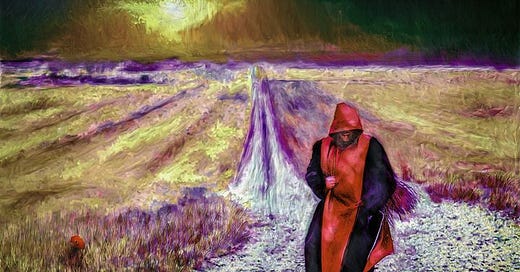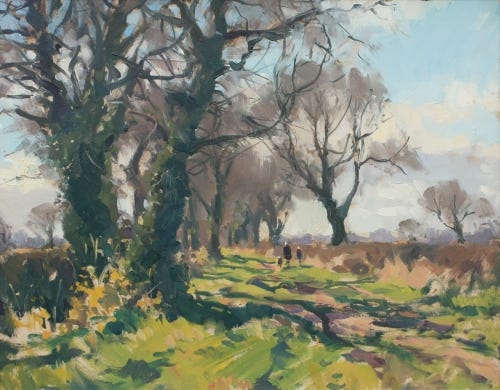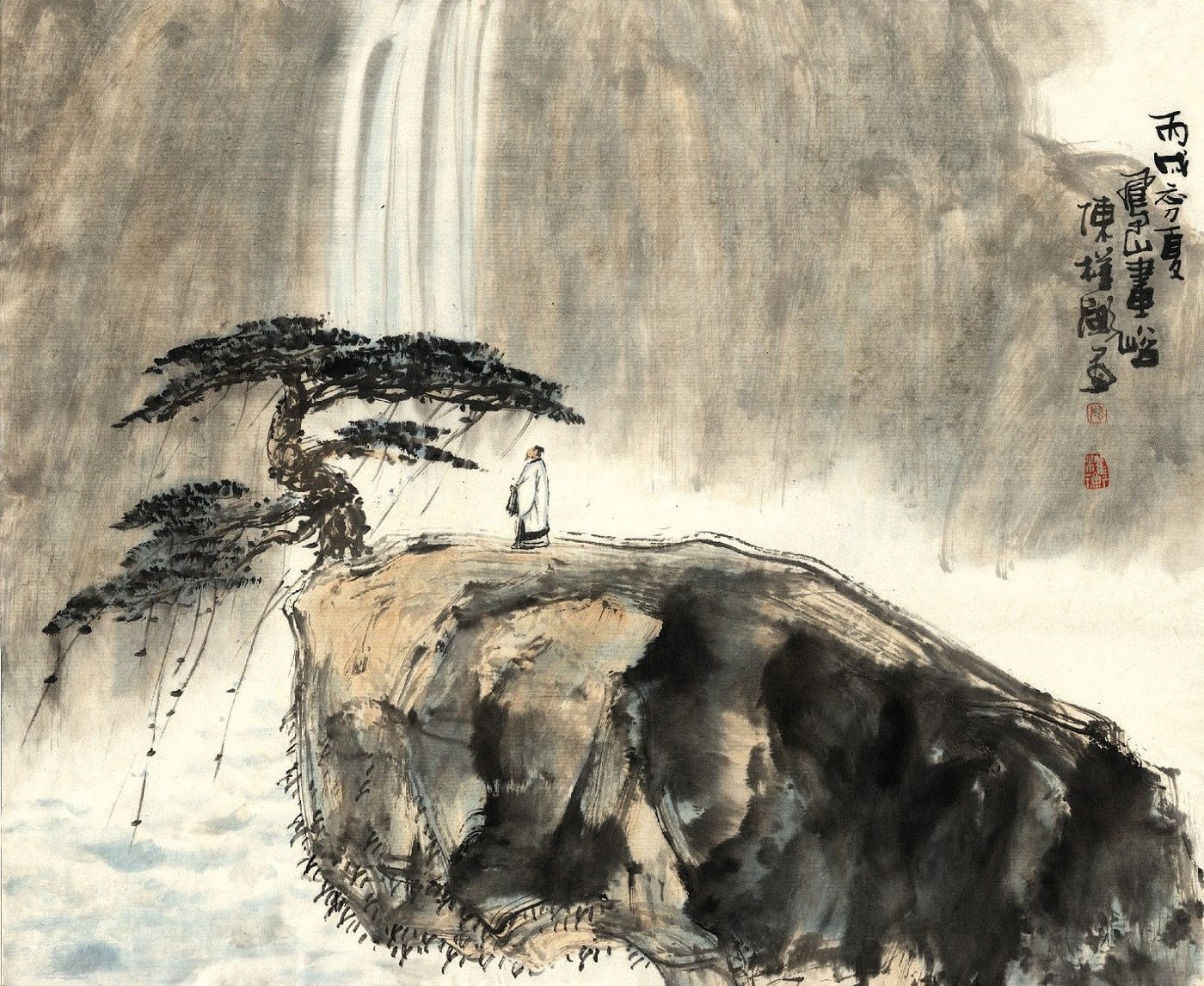‘The Pilgrimage is one of the basic modes of walking, walking in search of something intangible.’
(Solnit, 2000)
Walking - a simple yet an arduous task - has been at the centre stage of human evolution- both physically and psychologically. It has been used in various fields, like philosophy, religious studies and literature. In a more contemporary context, artists have used walking as a meditative art-form. Walking serves as a quest to find compatible answers to each person who walks. Many religions around the world hold walking as the highest order of pilgrimage, which leads one straight to oneself and to one's soul. Then why are we not practicing more of it? And what’s the difference of walking on a treadmill and walking in the nature? or are both the same thing?
Let’s explore these ideas together in the following essays..
Solnit says, “ I like walking because it is slow, and I suspect that the mind, like the feet, works at about three miles an hour. If this is so then the modern life is moving faster than the speed of thought or thoughtfulness.” This relationship between the pace of travel and its relationship with the mind is what intrigues me. We have grown too fast due to technology and our natural cycles have shifted. We have made a society that simply has no time to stop and contemplate. Nature gave northern regions winter to hibernate and it gave monsoon for the Tropical people, but the ability to remotely work on the internet even in those seasons has pushed our anxieties and stress levels way over the expected scales. We have forgotten the holidays, the vacations, the occasional sit outs in parks or atop a hill. We have forgotten to sit and have a conversation with nature, listen to what dialogues are happening at each moment between the ever-changing maze of wilderness that surrounds us all the time. Buzzard, in the Beaten Track distinguishes between the idea of a traveller and a tourist - one being foreign and one being familiar. Tourists are interested in a fast-paced experience which allows them to travel in cars, buses and planes. This commercial vehicle that’s driving change in the society is huge in number. Travellers on the other hand, of which pilgrims, and the walking artists that I will mention as the essays progress, are an example, are more lenient with their time and thus have a much deeper connection with nature, forming a more genuine experience. Shouldn’t we all aspire to be a little more traveller than being a commercial tourist?
Pilgrimage has been defined as a journey made in search of a place or a state which is considered to embody a set of ideals. The word ‘pilgrim’ according to the Merriam-Webster is defined as: one who journeys through foreign land. But, according to the Oxford Dictionary it is defined as a person who travels to a holy place for religious reasons. And yet, the word ‘pilgrim’, comes from the Latin root ‘peregrinus’ meaning one from abroad, that is a foreigner or a traveler. Thus, we can see many connotations associated with the word pilgrim. Here, in the modern context we find it to be closely linked with religious purposes as stated in the Oxford Dictionary. Thus it can be understood that pilgrimage is a journey to begin with. This journey that an individual undertakes in a foreign place as an ‘other’ to begin with.
This journey, the intersection between physis (nature) and nomos (law) was recognized by the early Stoics. ‘This debate around the contrast between nature and culture was thoroughly explored in classical philosophy’, as Bryan Turner points out. As I walked across India, I witnessed two different worlds. A natural world which consisted of conscious and semi conscious living things like plants, the animals, and non-living things like the stones and the mountains; the other world was on the human level which consisted of culture and identity. On the lower level culture held within itself many countless sub-cultures and ‘many different “sub-worlds” depending upon the perceivers or creators of their respective worlds’, as Eckhart Tolle, the spiritual teacher remarks.
Pilgrimages as ‘communitas’
Pilgrimages have been at the center of the human experience for many thousand years now. A pilgrimage is a release from certain moral conundrums, and bondages that plague modern society, thus offering a clearer understanding of nature as it is, as opposed to nature as it is dictated. One leaves their local-community, which exercises the daily-life in a particular way, only to find oneself as a part of a much larger community. Victor Turner refers to this as a ‘distinct sense of community consciousness.’
“As I began to study the patterns of such pilgrimages across the world, I realized that these pilgrimages have been a central part of many regions around the world.” (Turner, 1974)
The accounts of medieval pilgrims who walked to find the religious history of their preferred religion, provide us a window into the psychological processes of the individual who undertakes these kinds of pilgrimages. In the modern times we have forgotten to leave on such journeys. Xuanzang a Chinese pilgrim, began his seventeen-year long overland journey to India (629-645 CE) defying the travel ban of his country.
Can one imagine being such a rebel today?
Guru Nanak, the founder of Sikh Religion travelled to nau-khandas- the nine regions of the world- presumably the Hindu and Muslim sites of worship. Today the Hindu and the Muslim world is finding it hard to even give some space to accommodate each other. There are countless such examples. Here I have tried to name a few pilgrims amongst the list of thousands, if not millions of pilgrims who have done - and will do -this external journeying on foot to reach an internal place of sanctity and worship.
It will be difficult to point at a specific period of time when things started changing. The truth is, they have always been changing and even these saints and philosophers that we praise so often were anomalies in their respective era. The common thread between them was that they were living close to nature, away from the society.
What’s changing then?
The West, which is driving the world currently, was largely based on a spiritual core which it dropped in the past centuries. It has instead turned towards Materialism, and it decided that ‘nature is Mechanical’, as Alan Watts would like to say. In the present day, with the clouding of phones, tv’s and laptops, the surroundings and city-life have changed dramatically. Distraction plays a vital role in our tech-savvy society where most of our time is spent on - as Jaron Lanier points out in his book - ‘bummer machines’, thus removing us from our actual surroundings and placing us in a ‘fictional space’ as discussed by Westphal in his book Geocriticism. One has to look back at long walking forms to get connected to the universe around. Pilgrimage was never meant as a walk towards a religious place, it was to make us observe the world, to truly see the impermanent nature of all things. There’s so much happening at each moment, the seasons are changing, the birds are singing, the dew is dropping down extremely slowly from the leaf, each morning is a new canvas where the sun paints a new painting, a new tree is springing up from the soil beneath.. it’s all marvellous, only if we stop and look!
so join me to explore these ideas in the coming months..






